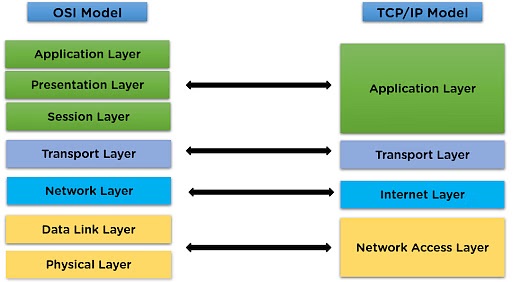Note: recently this has been asked in the first round of the technical interviews by Tiktok (Bytedance) for a Site Reliable Engineer role in London. TCP/IP Protocols is a fundamental concept in Computer Networking (Computer Science), which every Software Engineer should be faimilar with.
TCP/IP (Transmission Control Protocol/Internet Protocol) is a set of networking protocols that governs how data is transmitted over the internet and other networks. It’s the fundamental communication model for the internet, consisting of two main layers:
Internet Protocol (IP)
IP is responsible for routing packets of data from the source to the destination. It operates at the network layer of the OSI model.
- IP addressing: Every device on the internet is assigned a unique IP address, which is used to identify the sender and receiver of data packets.
- Packet routing: IP breaks down data into packets and routes them across different networks to reach the target address.
- Versions: The two main versions of IP are IPv4 (32-bit addresses) and IPv6 (128-bit addresses).
Transmission Control Protocol (TCP)
TCP is responsible for ensuring the reliable transmission of data between devices. It operates at the transport layer of the OSI model.
- Connection-oriented: TCP establishes a connection between the sender and receiver before transmitting data.
- Data integrity: TCP ensures that data packets arrive in order and without errors through mechanisms like acknowledgment, sequence numbers, and error checking.
- Flow control: TCP prevents overwhelming the receiver by managing the flow of data using sliding windows.
How TCP/IP works together
- Application Data: The application layer sends data (e.g., a webpage, email) to the transport layer (TCP).
- TCP Layer: TCP breaks the data into segments, adds sequence numbers and error-checking information, and sends it to the IP layer.
- IP Layer: The IP layer encapsulates TCP segments into IP packets, attaching source and destination IP addresses. It routes the packets through various networks.
- Receiving End: At the destination, the IP layer hands the packets to TCP, which reassembles them into the correct order and verifies data integrity before passing them to the application layer.
Other Protocols in the TCP/IP Suite
- UDP (User Datagram Protocol): A connectionless, faster alternative to TCP, used for real-time communications like video streaming or online gaming.
- HTTP/HTTPS (HyperText Transfer Protocol): Application layer protocols used for web communications.
- DNS (Domain Name System): Resolves domain names into IP addresses.
TCP/IP ensures that data is efficiently transmitted across networks, maintaining reliability, addressing, and routing while adhering to the underlying communication principles of the internet.
TCP/IP is typically described as having a 4-layer model, but it can sometimes be compared to the OSI model, which has 7 layers.
TCP/IP 4-Layer Model
The TCP/IP model is simplified into four layers, designed to reflect how protocols work in real-world networks.
Application Layer
This layer corresponds to the top three layers of the OSI model (Application, Presentation, and Session). It includes protocols like HTTP, HTTPS, FTP, DNS, and SMTP.
Transport Layer
Responsible for reliable communication between devices. Protocols like TCP (Transmission Control Protocol) and UDP (User Datagram Protocol) operate here.
Internet Layer
Handles packet routing across networks, corresponding to the OSI’s Network layer. This layer includes the Internet Protocol (IP) for addressing and routing packets.
Network Interface Layer (or Link Layer)
This layer handles data transfer between the physical network (e.g., Ethernet, Wi-Fi) and the internet layer. It corresponds to the OSI’s Data Link and Physical layers.
OSI 7-Layer Model
The OSI (Open Systems Interconnection) model is more granular and separates networking functions into seven layers.
- Physical Layer (e.g., cables, switches)
- Data Link Layer (e.g., MAC addresses, Ethernet)
- Network Layer (e.g., IP routing)
- Transport Layer (e.g., TCP, UDP)
- Session Layer (e.g., managing sessions between applications)
- Presentation Layer (e.g., encryption, data formats)
- Application Layer (e.g., HTTP, FTP)
Key Difference: TCP/IP vs OSI
TCP/IP combines some functions into fewer layers (4 layers), reflecting its practical use in internet communication.
OSI is a more detailed conceptual model (7 layers), used mainly for teaching and theoretical understanding.
In summary, TCP/IP is most often considered a 4-layer model, while the OSI model is the one with 7 layers.
–EOF (The Ultimate Computing & Technology Blog) —
loading...
Last Post: The Memory Manager in C/C++ (Heap vs Stack)
Next Post: What is the Enterprise Engineer in Meta? (Comparisions to Software Engineer Roles)
